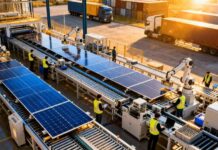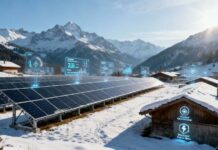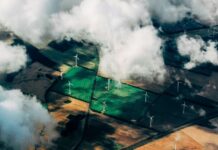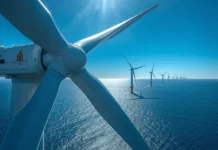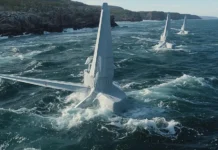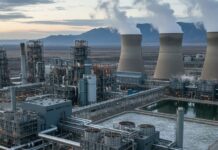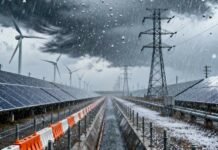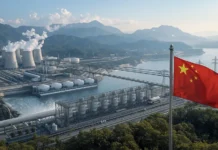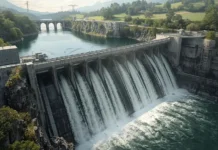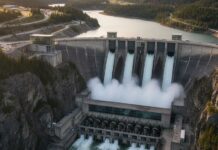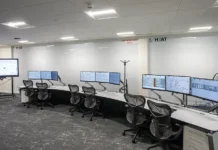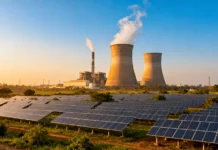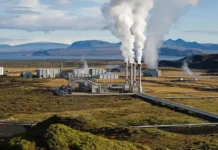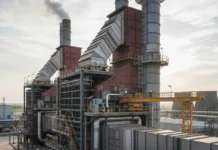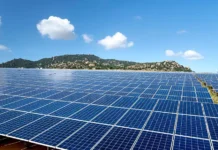As the world is looking out for ways in order to going ahead and tackle the urgent requirement for sustainable energy solutions, innovative approaches when it comes to power generation are emerging, especially within the industrial zones.
There are low-impact run-of-river plants that happen to be at the forefront of this movement, specially designed in order to deliver clean and renewable energy right to the nearby factories as well as data centers. Unlike the traditional hydroelectric dams, which happen to have a prominent environmental impact, these green dam projects provide a more sustainable choice by way of making the most out of the natural flow of rivers without the requirement in terms of large reservoirs or even extensive ecological disruption.
Let us look into the advantages, operational principles as well as the rising adoption when it comes to the low-impact run-of-river plants within the industrial application setup.
What does one understand by low-impact run-of-river plants?
Low-impact run-of-river plants make use of the kinetic energy of flowing water in order to generate electricity. Unlike the conventional hydroelectric systems that happen to need substantial damming of the rivers, run-of-river technology functions with bare minimum alterations to the natural landscape. By way of diverting only a portion of the river’s flow across the turbines, this kind of approach preserves the ecosystem of the river while at the same time generates a lot of renewable energy. It is well to be noted that these plants typically have in them a water intake system, turbines, along with a generator which is a full setup designed to blend in a harmonious way within the surrounding environment. The absence when it comes to the large reservoirs goes on to mean that the run-of-river plants have a prominently decreased footprint, thereby minimizing the effect on local wildlife as well as aquatic habitats. As per the US Department of Energy, run-of-river hydroelectric systems can have a generation capacity that ranges right from a few kilowatts to several megawatts, thereby making them perfect in terms of directly supplying the energy to local industries. As the demand when it comes to clean energy sources grows with time, the role as far as the low-impact run-of-river plants within the industrial zones is becoming more and more vital.
Giving out clean power to factories as well as data centers
The integration when it comes to low-impact run-of-river plants within the industrial zones offers numerous advantages. By way of supplying the clean energy directly to the factories as well as data centers, these plants happen to contribute majorly towards decreasing the carbon footprint that is associated with the power generation. It is well to be noted that industries happen to be under mounting pressure in order to adopt the sustainable practices as well as decrease greenhouse gas emissions, and this low-impact hydroelectricity goes on to present a very attractive option which is indeed one of a kind.
In particular, the data centers are very much significant consumers when it comes to energy and often rely on fossil fuel-generated electricity. As the demand in terms of data storage as well as processing continues to grow, so too does the requirement when it comes to sustainable energy choices. The low-impact run-of-river plants can happen to serve as a major critical energy source when it comes to data centers, thereby enabling them to function sustainably while at the same time minimizing the effect they happen to have on the environment.
One of the case studies, which was conducted by the National Renewable Energy Laboratory (NREL), went on to find out that the facilities that utilize renewable energy resources, such as run-of-river plants, went on to experience a decrease in terms of their operational costs, improved perception from the public, and also elevated compliance in terms of environmental regulations. By way of integrating the low-impact hydroelectricity, factories as well as data centers can as well position themselves as leaders within the sustainability as well as corporate responsibility gamut.
The environmental advantages of low-impact systems
One of the most compelling elements of low-impact run-of-river plants happens to be their decreased environmental footprint as compared to that of traditional hydroelectric projects. The disruptions in terms of ecology that are caused due to large dams, which include habitat destruction, altered river ecosystems, as well as effect on fish migration, get significantly lessened due to the run-of-river technology.
Through maintaining the natural flow when it comes to rivers as well as also minimizing the requirement for extensive construction, these plants help the aquatic habitats to mushroom by preserving both the biodiversity and also protecting the local ecosystems.
Moreover, the smaller scale when it comes to the run-of-river plants goes on to mean that they are often easier as well as faster to get the permission for construction, thereby enabling the quick execution in terms of renewable energy solutions.
A study that was published in the Renewable and Sustainable Energy Reviews journal went on to stress that the low-impact hydroelectric projects can indeed be very critical when it comes to preserving the river health while at the same time meeting the energy requirements of the nearby communities. This kind of dual benefit when it comes to the energy production as well as environmental conservation positions the low-impact run-of-river plants as a very appealing choice in terms of the sustainable energy development.
Economic considerations along with community effect
It is well to be noted that the economic implications when it comes to low-impact run-of-river plants go beyond the immediate advantages when we talk of clean energy. By way of generating power in a local way, these plants can very well decrease the transmission losses that most often occur in terms of long-distance electricity transport. The localized energy production happens to elevate the energy efficiency and at the same time it also goes on to decrease the costs for businesses that happen to depend on the balanced electricity supplies.
In addition to this, the establishment when we talk of the low-impact run-of-river plants can even stimulate the local economies by way of job creation as well as rising investment within the infrastructure. The construction along with the maintenance of such facilities needs a workforce that is very skilled, and as the demand for renewable energy grows, there would be more jobs within the renewable energy sector which can very much be anticipated.
Besides this, communities that surround low-impact run-of-river plants may also experience growth in tourism along with certain recreational opportunities, as these projects often elevate the natural beauty of the surrounding landscape. As people look out for sustainable vacation experiences, the presence when it comes to clean energy infrastructure can also attract these visitors, who are more often than not interested in the idea of ecotourism.
Low impact of river plants and their future
As the worldwide energy spectrum continues to grow and also evolve, low-impact run-of-river plants are all set to play a very vital role when it comes to the transition to renewable energy. With growing investments within the green technologies and a rising emphasis on sustainability, opportunities when it comes to expanding these systems in the industrial zones are indeed unparalleled.
Policymakers, along with energy regulators, are also recognizing the significance of integrating low-impact run-of-river projects within their energy planning as well as development. Governments, on the other hand, are now establishing incentives along with supportive frameworks in order to encourage investors to invest in renewable energy, which kind of bodes well for the future of run-of-river systems. Besides this, the advancements within the turbine technology along with energy storage solutions are also going to elevate the efficiency as well as the dependability of low-impact run-of-river plants. As the research continues to develop innovative solutions when it comes to integrating the systems within existing energy grids, the potential for their widespread adoption continues to rise.
Conclusion
It is worth noting that the growth of low-impact run-of-river plants marks a prominent advancement within the pursuit of sustainable energy solutions. By delivering clean power directly to the factories as well as data centers, these innovative projects not just address the needs of energy, but at the same time, they also promote the stewardship of the environment and economic revitalization. Due to their minimal ecological footprint along with the significant benefits that they offer, the low-impact run-of-river plants are very well positioned in order to become a cornerstone when it comes to the renewable energy spectrum within the industrial zones.
Interestingly, as industries as well as communities embrace the potential when it comes to these systems, the future looks very bright for low-impact hydroelectricity. By way of making utmost use of the power of our rivers, responsibly and sustainably, we can indeed go ahead and create a very clean and resilient energy future and at the same time also preserve the natural ecosystem that happens to sustain us.



